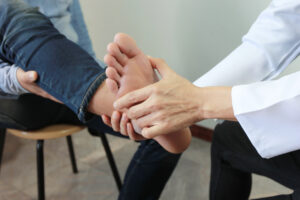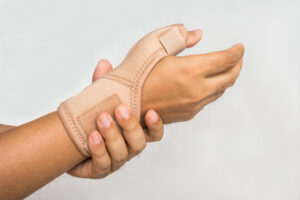Key Pointers:
- Sprained ankles vary in severity and healing time.
- Recovery depends on lifestyle factors (rest, activity level, nutrition) and medical care.
- Age, overall health, and prompt treatment can influence how quickly you heal.
- Ignoring an ankle sprain or returning to sports too early increases risk of re-injury.
- Rehabilitation exercises and physiotherapy often play a key role in full recovery.
What Happens During an Ankle Sprain?
An ankle sprain occurs when the ligaments, strong bands that hold your ankle joint together, stretch beyond their limit or tear. This usually happens during a fall, awkward landing, or sudden twist. Symptoms include swelling, bruising, pain, and difficulty walking.
How Long Does It Take to Recover From a Sprained Ankle?
Mild sprains may heal in a couple of weeks, while more severe sprains can take months. The timeline depends on:
- Grade of sprain (mild stretching vs. partial or full ligament tear)
- How quickly you begin treatment (early care reduces complications)
- Your overall health and age (younger, healthier bodies often recover faster)
What Lifestyle Factors Can Speed Up Recovery?
Certain choices during recovery can help the ankle heal more effectively:
- Adequate rest and protection – giving the ligament time to repair.
- Physiotherapy – guided exercises to restore strength and stability.
- Good nutrition – a balanced diet supports tissue repair and reduces inflammation.
- Gradual return to activity – easing back into walking or sports prevents setbacks.
What Can Delay or Complicate Recovery?
Some habits and conditions can slow down progress:
- Ignoring the injury – “walking it off” can worsen ligament damage.
- Skipping rehabilitation – not rebuilding strength raises the risk of chronic instability.
- Poor footwear choices – wearing unsupportive shoes can stress the ankle.
- Age and medical conditions – arthritis, diabetes, or poor circulation may prolong healing.
Why Is Physiotherapy Important After a Sprain?
Even after pain and swelling improve, the ankle may still be weak. Physiotherapy helps:
- Retrain balance and coordination
- Strengthen supporting muscles
- Reduce the risk of future sprains
- Support safe return to daily activities and sports
Recovering from a sprained ankle isn’t just about waiting for the pain to fade. It’s about giving your body the right support at the right time. By understanding the factors that influence healing, you can take smarter steps towards recovery and reduce the chances of long-term ankle problems.
FAQs About Sprained Ankle Recovery
Q1: Can I walk on a sprained ankle?
It depends on the severity. Mild sprains may allow some walking, but severe sprains usually require rest and support.
Q2: Should I use ice or heat?
Ice is generally recommended in the first 48 hours to reduce swelling. Heat may be used later to relax muscles and improve circulation.
Q3: Do ankle braces help recovery?
Yes. Braces or support bandages stabilise the ankle during healing and prevent re-injury.
Q4: When should I see a doctor for an ankle sprain?
If you cannot bear weight, the swelling is severe, or pain does not improve within a few days, medical assessment is advised.
Q5: How can I prevent another sprain in the future?
Wearing supportive shoes, engaging in strengthening exercises, and performing proper warm-ups before activity all help reduce the recurrence of injuries.
Book an Appointment Now For Proper Ankle Care
Healing a sprained ankle is not just about waiting, it’s about making the right choices. Early treatment, proper care, and rehabilitation can make the difference between a quick recovery and long-term issues.
📍 Mash Spine & Orthopaedics, Farrer Park Medical Centre
📞 Call +65 6518 9545 or Book a Consultation Here













